For a long time, brands have struggled to deliver incredible customer service over the phone, wading through the long lines of people waiting on hold and solving one individual problem at a time. But the advent of the internet and the instant gratification that consumers seek today means that brands have to go one step further.
It’s not enough to hide a phone number at the bottom of your website and make people wait for an hour just to speak to someone. The ability to get in-the-moment information means consumers have other options – and they’re far more likely to jump ship if they can get better customer service elsewhere.
Our Sprout Social Index™: 2021 UK & Ireland edition revealed that customer service matters the most to consumers on social media. It was ranked as more important than high quality products and services, sharing innovative content, and being culturally relevant.
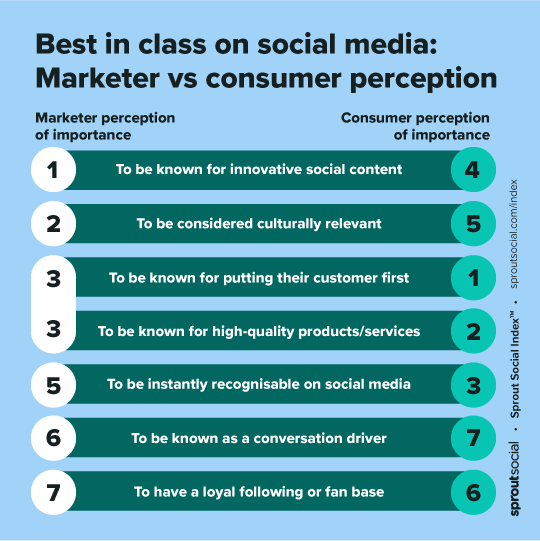
Businesses, on the other hand, don’t consider customer service as such a high priority on social media. Instead, they favour social media as a marketing function and a way to reach new customers. When asked “what matters the most” on social media, most businesses ranked delivering innovative social content as the most important.
So, while you’re focused on creating award-winning campaigns and making content go viral, your customers are looking for great customer experience. But adding a customer service dimension to your social strategy can be taxing when resources are already limited. Enter: chatbots.
Juniper Research estimates that bots will save consumers and businesses 27 billion customer service hours by 2023. But if you think using chatbots means dehumanising the experience and replacing customer service professionals with “robots,” think again.
What exactly is a chatbot?
You’re probably familiar with chatbots. In fact, you’ve probably experienced one in action when visiting a website. Often, they’ll open up a window in the bottom corner to ask you a question or direct you to certain information.
Social media chatbots are specifically designed to simulate a human conversation on Facebook, Twitter or Instagram. They allow you to interact with your customers without needing support staff to be available around the clock.
There are two different kinds of chatbots:
- Machine learning chatbots
- Rules-based chatbots
Machine learning chatbots use artificial intelligence to gather insights and create a more personal experience for customers. The more information they have, the more they can learn what each individual customer wants and needs. Rules-based chatbots let you create a series of triggered events that happen when a customer starts interacting with your chatbot.
Sprout Social’s Bot Builder tool helps you design rules-based sequences that guide potential customers through the sales cycle. For example, if someone asks a particular question, you can programme your chatbot to direct them to a page on your site, click a CTA or choose another option.
The chatbot is activated when a customer opens a direct message in Facebook or Twitter. From there, it welcomes them and offers a few ways it can assist. This might mean suggesting some frequently asked questions or linking them to a current sale. If the chatbot is unable to give them the information they need, customers always have the option to speak to a real human.
Domino’s chatbot “Dom” has become very popular with pizza lovers who want to order a pizza using just one word.
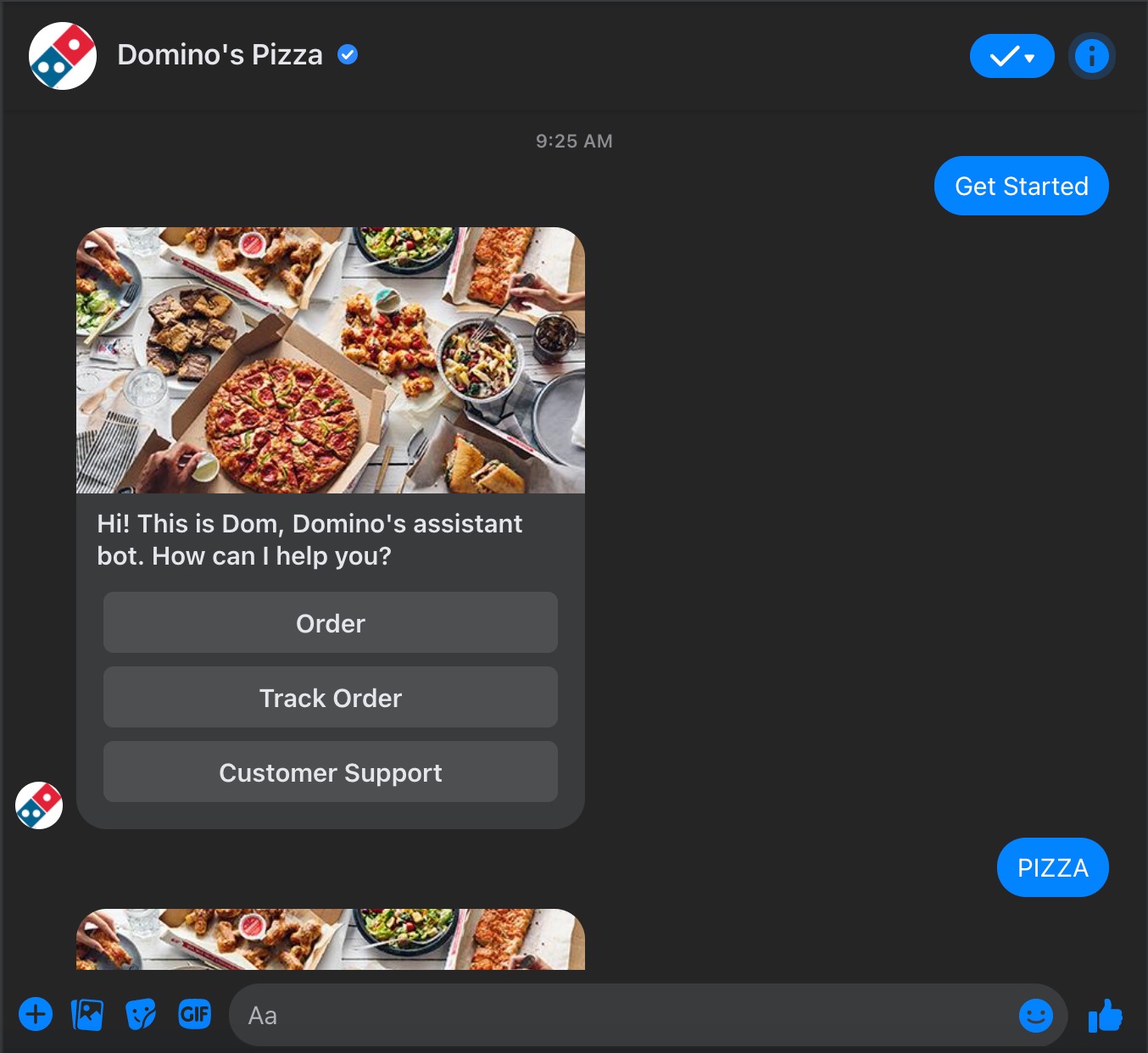
Why chatbots are the perfect customer service assistant
Customer service is an integral part of business—especially if you want customers to stick around. Fierce industry competition means that if customers don’t get the assistance they need when they need it, there’s always somewhere else to go. Aside from this, there are plenty of other reasons chatbots make ideal customer service assistants.
Send instant responses
Research conducted by the Harris Poll on behalf of Sprout Social revealed that 77% of consumers expect a response from a brand on social media within 24 hours of reaching out. While humans are capable of providing excellent customer care, they can’t be everywhere at once and can only help one person at a time. Chatbots are able to swoop in and save the day by slashing response wait time to almost nothing.
Provide service outside of business hours
Imagine a consumer is indulging in a bit of late night shopping on your website. They find the perfect product but have a tiny question they want ironed out before they buy. Chatbots provide instant responses to common questions customers might have, regardless of the time of day. They no longer have to wait until business hours open to get support, which increases the chances of a conversion.
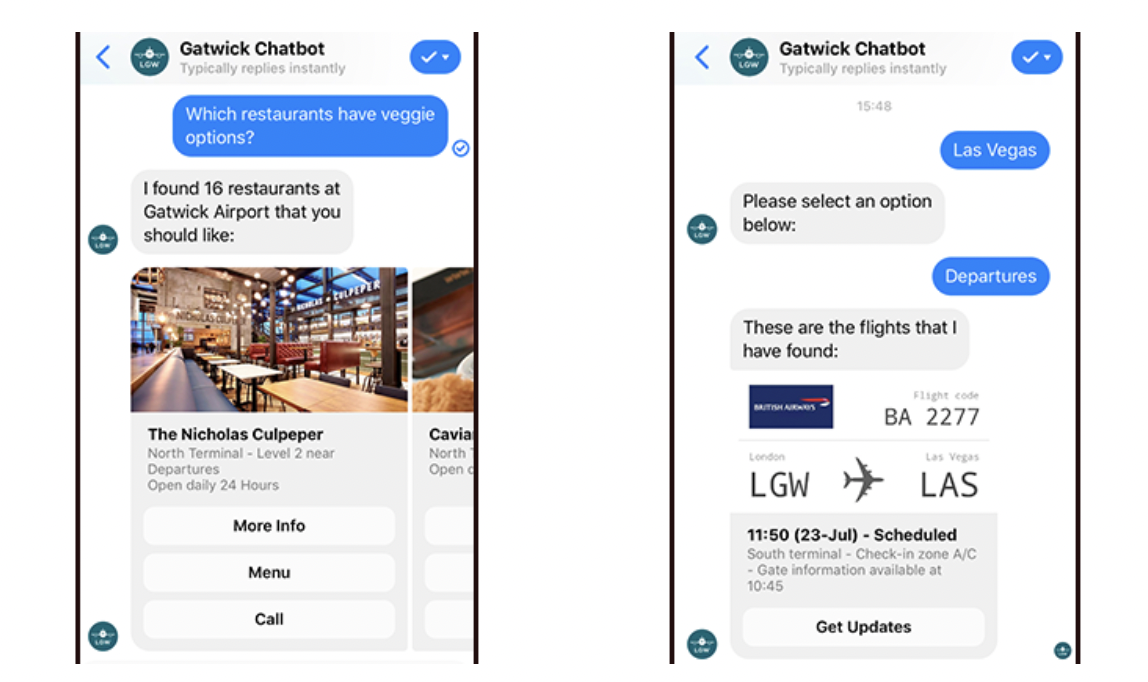
Gatwick’s chatbot lets customers explore restaurant menus and flights whenever they want.
Free up your support team
Ask any customer service team what questions they get the most, and you’ll tend to see patterns emerge. Frequently asked questions are common, but they also take up time. Chatbots enable customers to get answers to their queries straight away while giving your human support team back hours of time they can spend on other activities. Rather than replacing your support team, chatbots work with them to maximise the customer experience no matter how simple or complex the enquiry is.
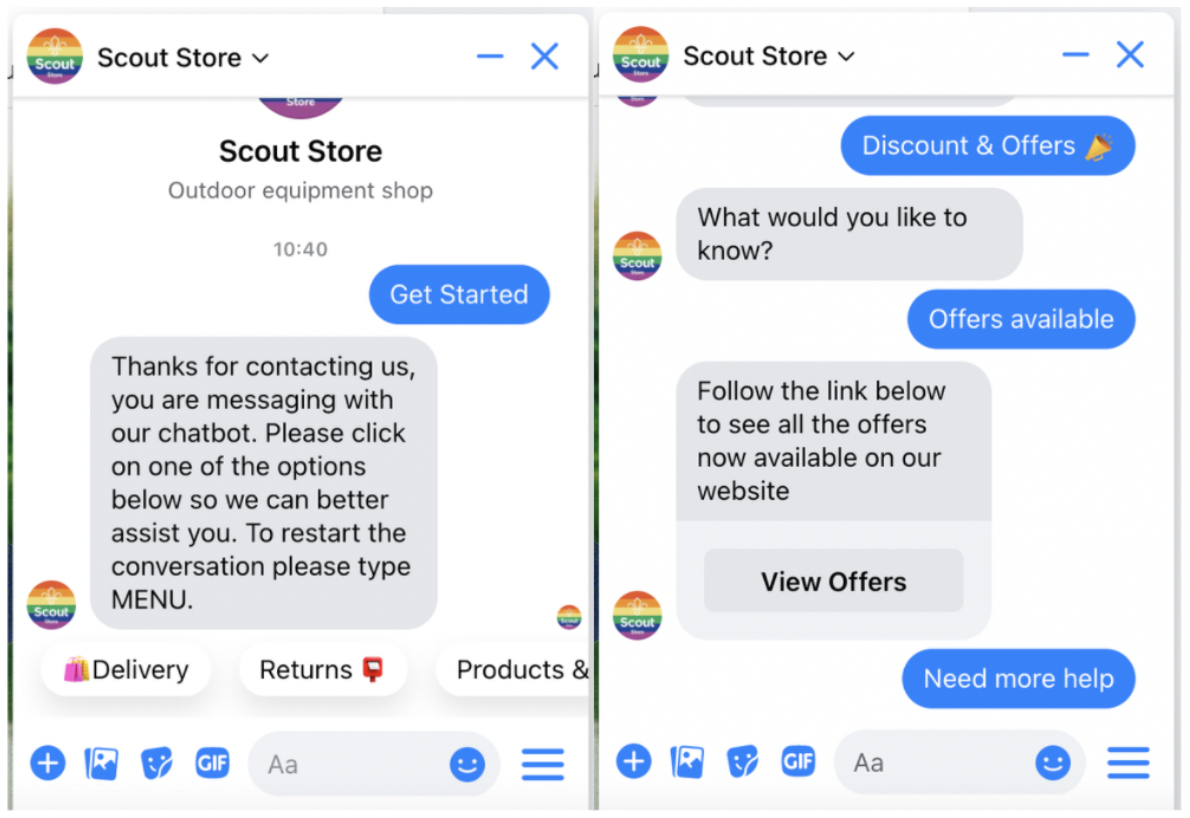
Scout Store uses a Facebook chatbot to give customers more information about their orders, products, and deals. The brand gives visitors several options they can choose, providing links to helpful resources and relevant pages on their website.
“The chatbots are a no brainer,” says Elena Aiello, Marketing Manager at Scout Store. “I’ve created 400 different options but it’s so easy to set up. Typically our enquiries can be quite straightforward and simple. ‘Where is my order?’ or ‘Do you have this size?’ for example. These are really easy for the chatbot to deal with, which means my customer service team can focus on the bigger, more complicated enquiries.”
Tackle customer objections
Many customers will have questions or objections they need answering before they make a purchase, particularly if they are buying a high-ticket product. Tackling these objections as and when they crop up with the help of a chatbot can streamline the sales process and remove any friction.
Get customer insights
Customer service is a two-way street. While chatbots give your customers information in real-time so they can make speedy decisions, you can get deeper insights into the buying behaviour, preferences and FAQs your customers have.
Save money
Of course, you should never skimp on customer service, but chatbots can help you save money on hiring entire rooms of customer service reps. Research has shown that chatbots can help businesses save up to 30% of the costs associated with customer support, all while providing a stellar experience.
How to set up a customer service chatbot
If you have no idea where to start when it comes to building a chatbot, you’re not alone. Sprout Social’s Bot Builder makes it easy to set up and create a rules-based chatbot customer experience on Twitter and Facebook. You can either create a chatbot from scratch and customise it to fit your customers’ needs, or you can use a template to help get you started (you can tweak the templates to better suit your sales cycle too).
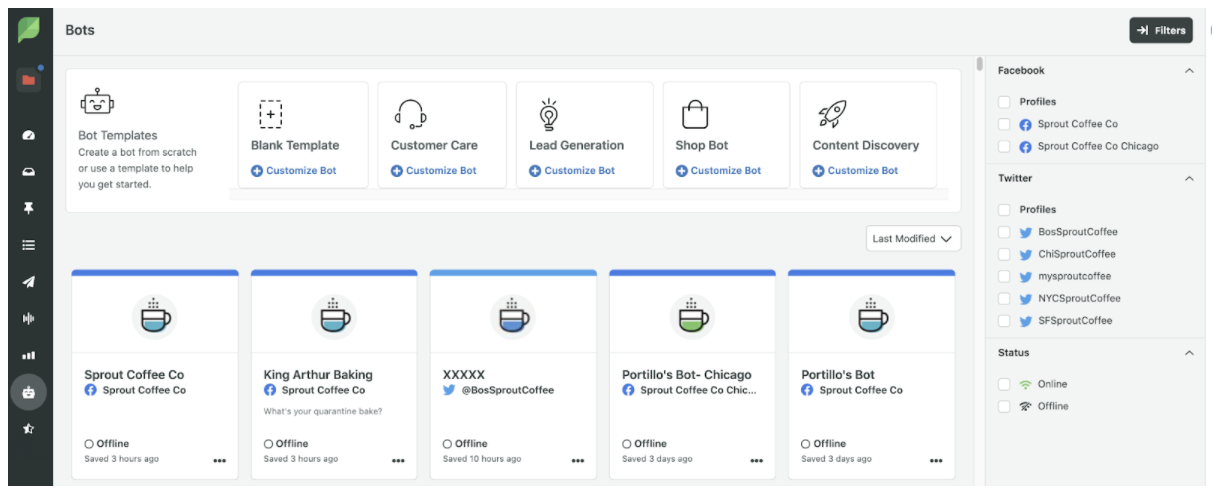
If you choose a template, you’ll be able to edit a decision tree with predetermined rules and script suggestions. Add your own rules or completely customise the copy to reflect your brand’s personality. Or, if you’re creating your bot from scratch, you can build out your own scripts and decision tree based on specific actions.
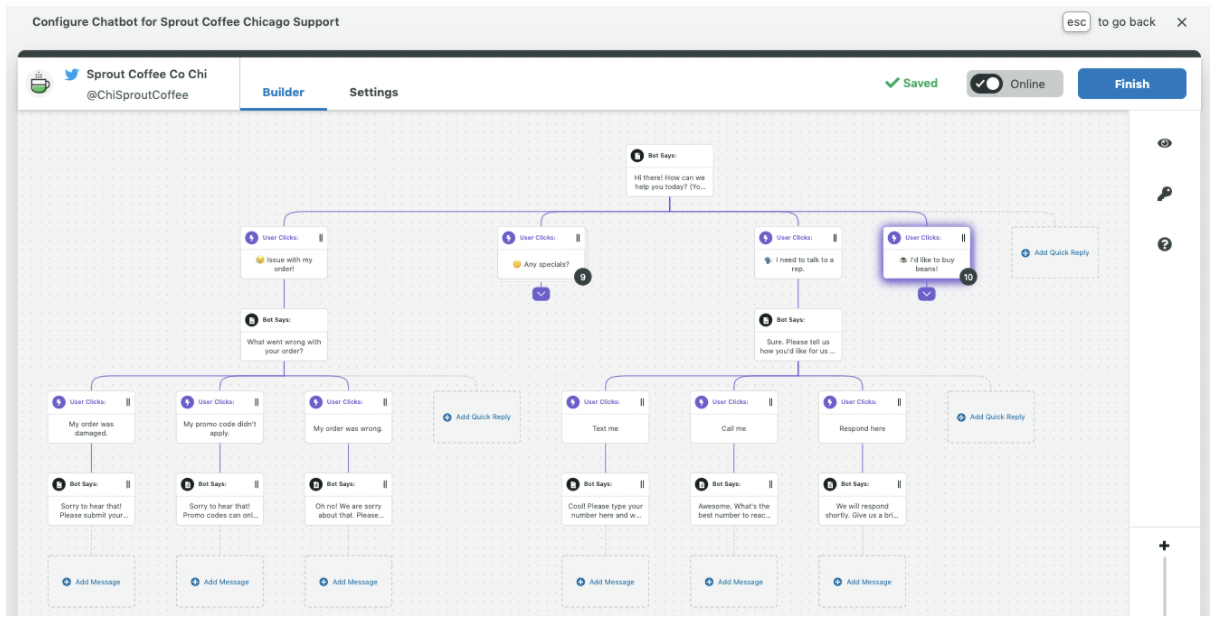
How to use chatbots to improve customer service
Chatbots can be a great solution for saving time, giving customers answers instantly, and keeping the sales cycle slick and frictionless. Once you’ve set up your chatbot, it’s time to get strategic to enhance its impact on the customer experience.
1. Employ autoresponders
Autoresponders give customers an instant reply when they want to get in touch with you. This keeps the connection going and provides an opportunity to share content and information with people who are engaged with your brand.
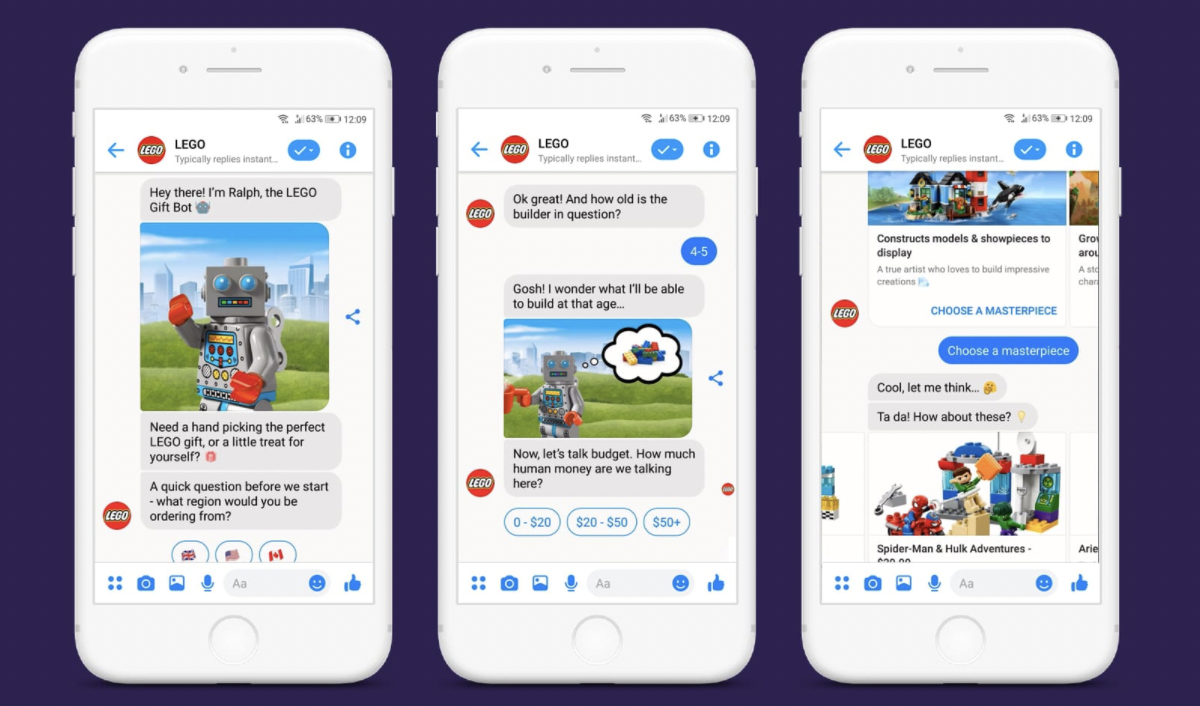
LEGO’s chatbot introduces itself to customers and then continues to ask some validating questions to find out more about what the customer is looking for.
2. Tackle in-the-moment objections
Customers who reach out to you have usually already decided they’re interested in what you’re offering. Keep the momentum going by offering answers to any objections they might have or, even better, allowing them to book or buy the product they want right then and there.
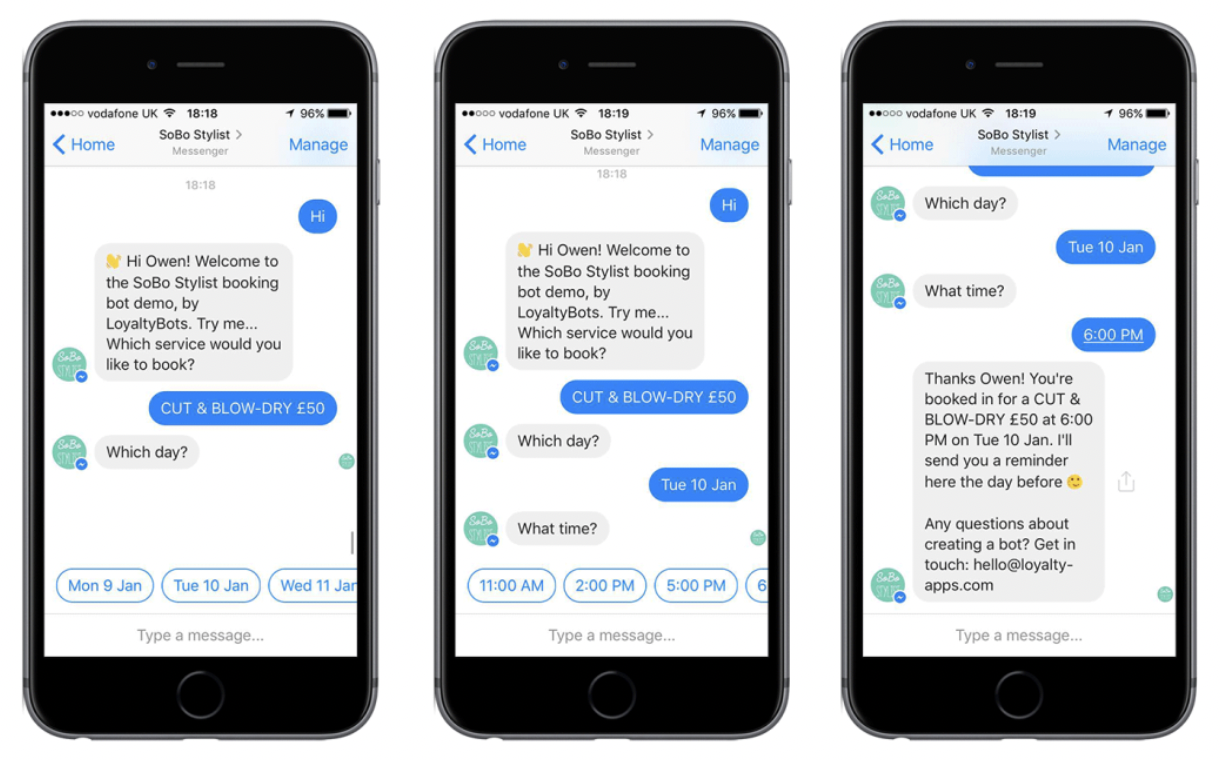
SoBo Stylist lets customers book a service through the chatbot. It simply asks what service they want and for a day and time.
3. Direct customers to your website
Getting customers to step away from scrolling can be hard, but if they’re already engaging with your chatbot there’s a high chance they’ll navigate to your site. Share links to product pages, blog content and other resources that help answer questions customers might have and accelerate their buying process.
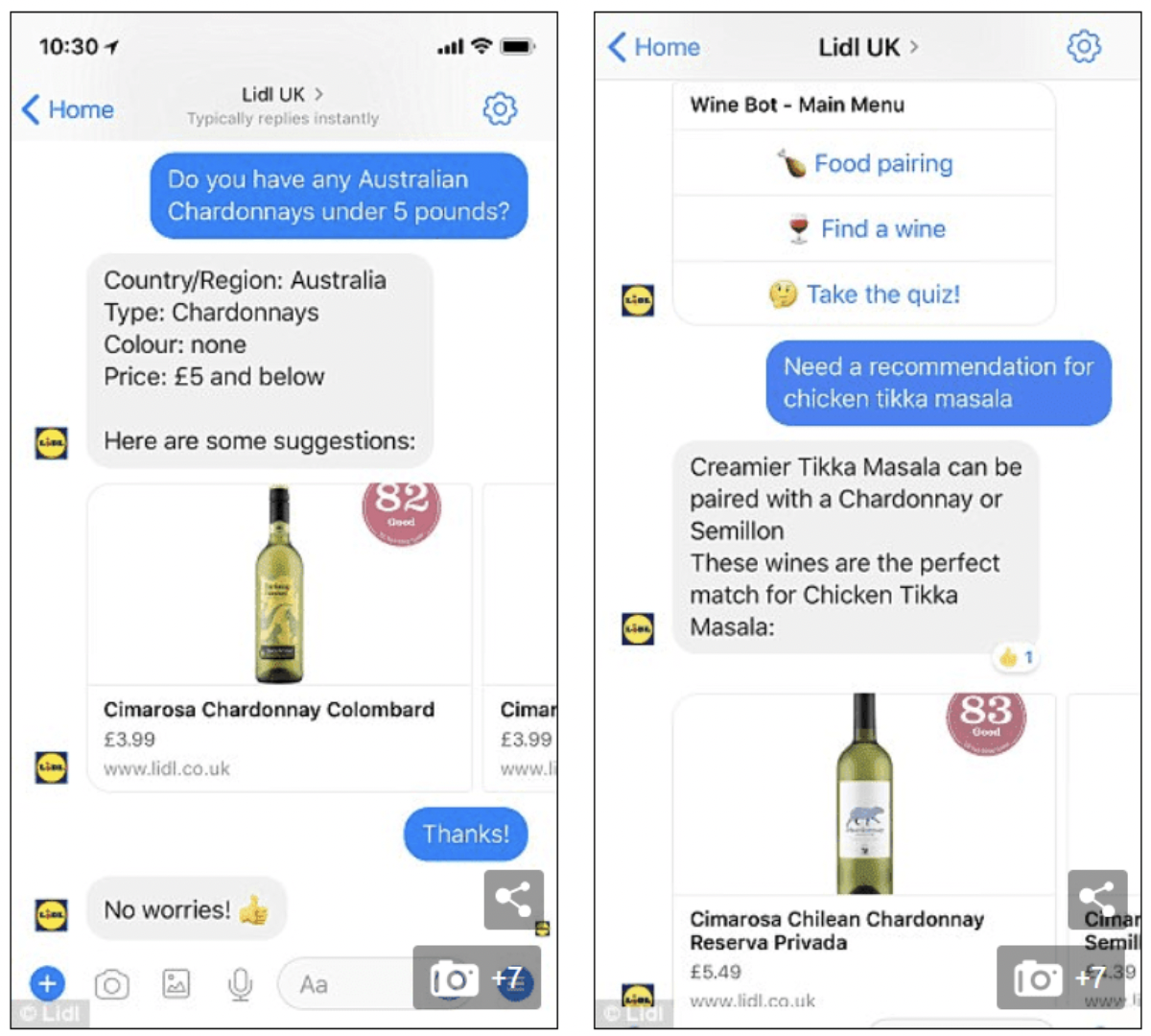
Lidl sends product recommendations to customers that align with their needs.
4. Personalise responses
Eight in 10 consumers are more likely to make a purchase from a brand that provides personalised experiences. The more you can personalise the responses from your chatbot, the more focused the customer experience will be. For example, use their name where possible, create content geared towards a specific set of needs, and collect information about their past purchases and interactions with your brand to use moving forward.
5. Showcase your brand personality
Despite a chatbot not being a real person, you can still configure them to show off your brand’s personality. The copy you use can reflect how informal or formal your brand is—a chatbot for a law firm will use very different language than a chatbot for a casual fashion brand, for example.
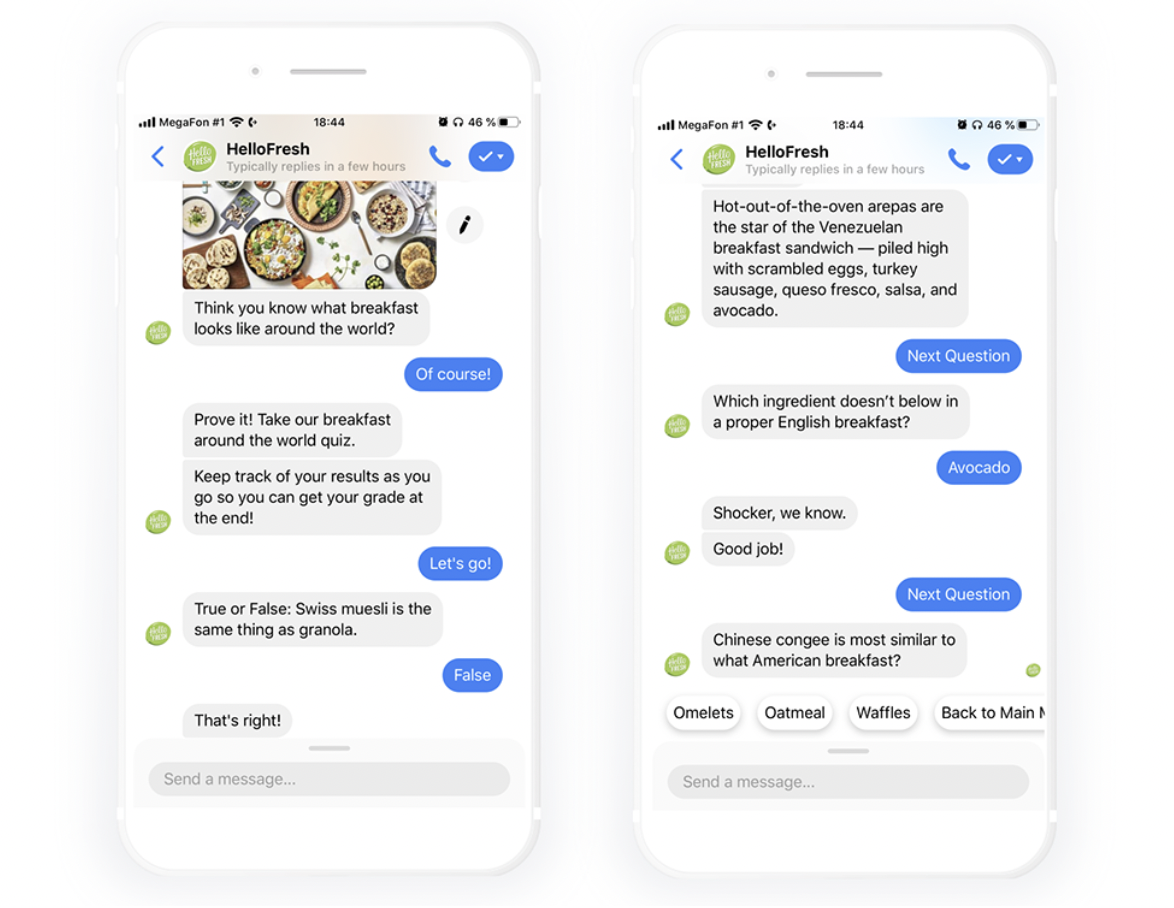
HelloFresh showcases its laid back personality with its chatbot. The language used screams cool, fun and trendy.
6. Collect (and implement) feedback
Every conversation a customer has with your brand is a chance for you to get to know them better. Accessing feedback through a chatbot gives you a deeper insight into the preferences and pain points of your buyers.
Use this information to fuel your strategy moving forward. If users keep asking the same question, consider adding a new page to your website and sending customers there, or adjusting your social media profiles to reflect that information.
Reimagine your customer experience with chatbots
Customer service has never been more important. But it’s also far more difficult for brands to be “switched on” every hour of the day. Online shopping now means consumers can buy products and services around the clock, and it’s up to you to meet their needs in the best way possible.
Customer service chatbots are a helpful addition to your support strategy. They let you tackle in-the-moment objections, serve relevant content at the right time, and work together with your existing support team to deliver better and more efficient customer service.
Ready to add chatbots to your social strategy? Get started with our free 30-day trial.
The post How to use chatbots to enhance the customer experience appeared first on Sprout Social.


